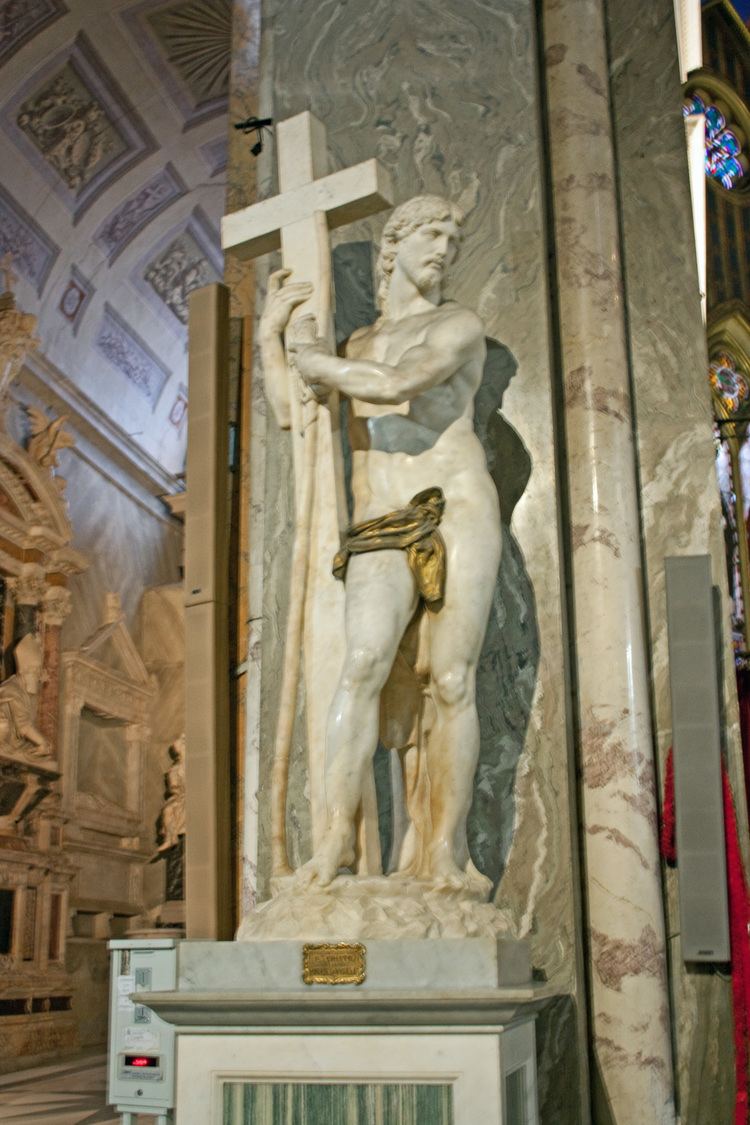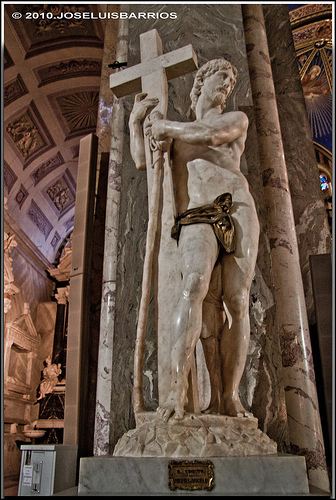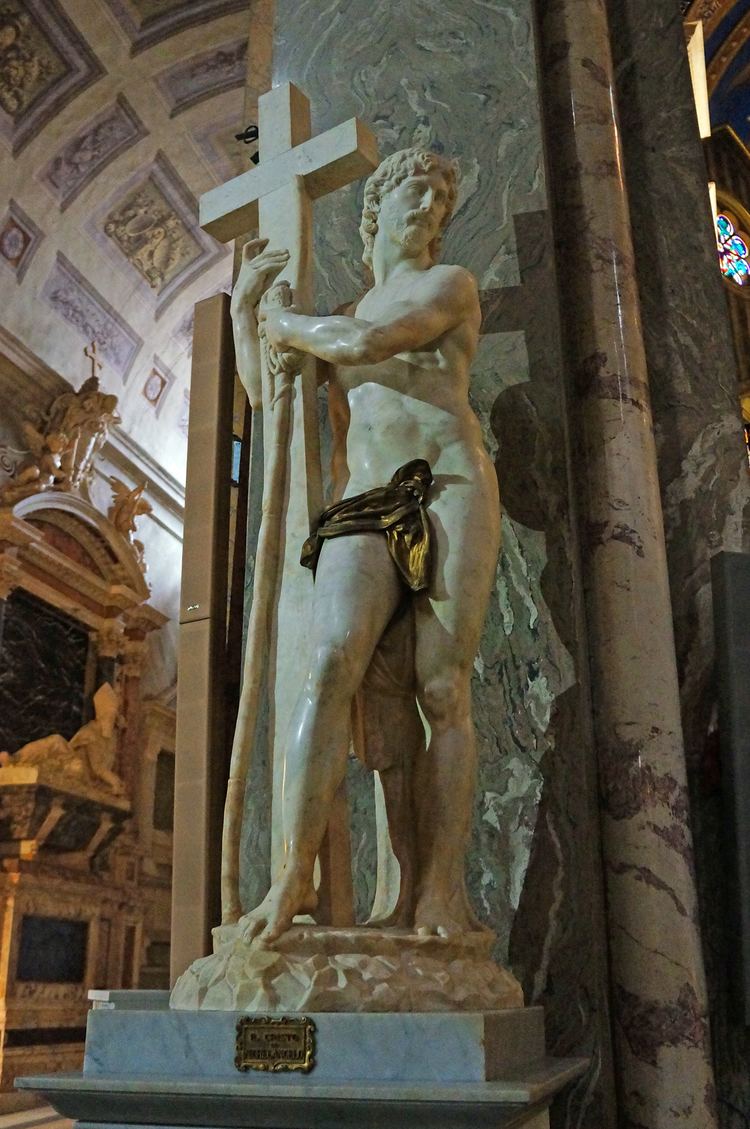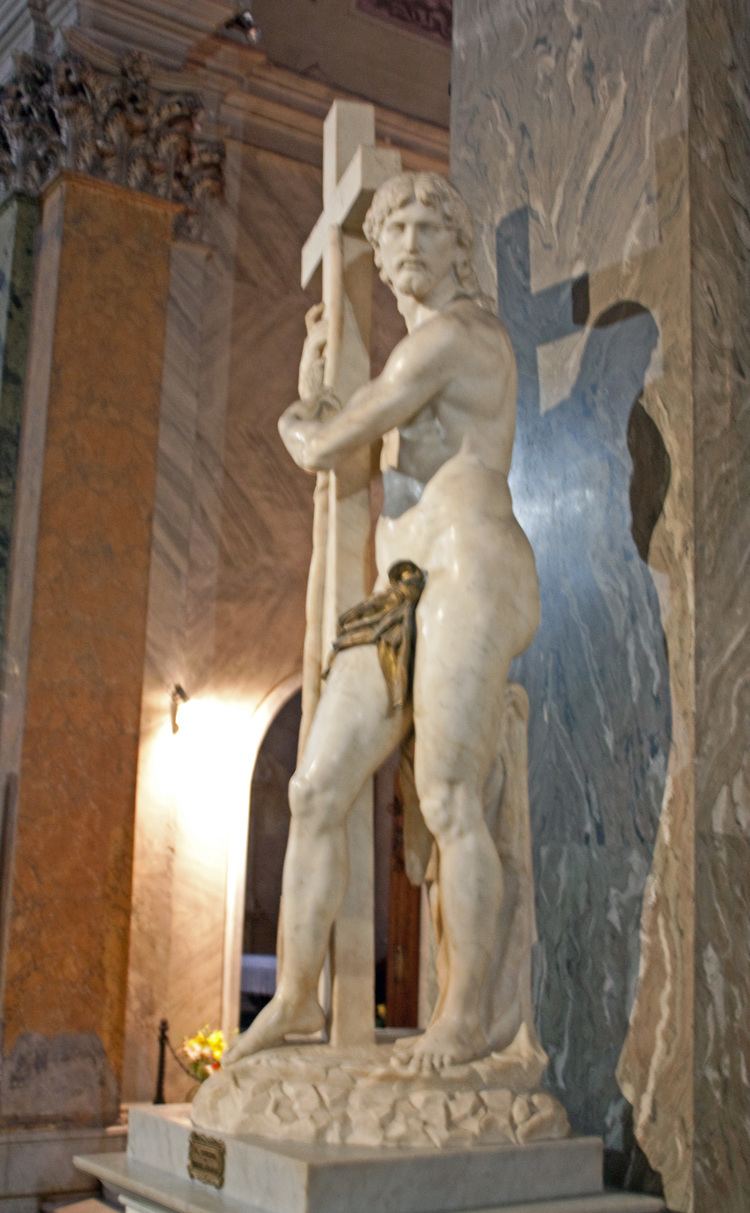Year 1519–21 Dimensions 205 cm (81 in) Location Santa Maria sopra Minerva Created 1519–1521 | Type Marble Artist Michelangelo Media Marble Genre Kinetic art | |
 | ||
Periods Italian Renaissance, High Renaissance, Renaissance Similar Michelangelo artwork, Marble, Renaissance artwork | ||
The Cristo della Minerva, also known as Christ the Redeemer, Christ Carrying the Cross or the Risen Christ, is a marble sculpture by the Italian High Renaissance master Michelangelo Buonarroti, finished in 1521. It is in the church of Santa Maria sopra Minerva in Rome, to the left of the main altar.
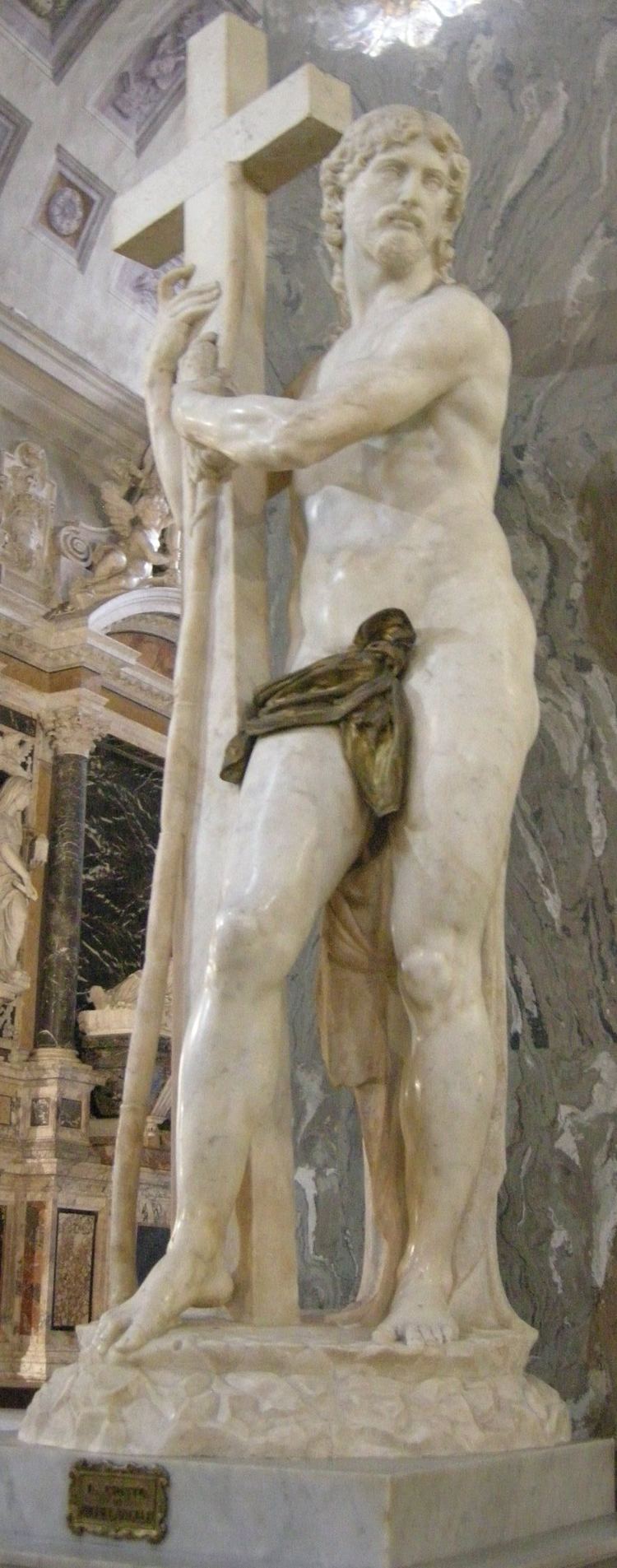
The work was commissioned in June 1514, by the Roman patrician Metello Vari, who stipulated only that the nude standing figure would have the Cross in his arms, but left the composition entirely to Michelangelo. Michelangelo was working on a first version of this statue in his shop in Macello dei Corvi around 1515, but abandoned it in roughed-out condition when he discovered a black vein in the white marble, remarked upon by Vari in a letter, and later by Ulisse Aldrovandi. A new version was hurriedly substituted in 1519-1520 to fulfil the terms of the contract. Michelangelo worked on it in Florence, and the move to Rome and final touches were entrusted to an apprentice, Pietro Urbano; the latter, however, damaged the work and had to be quickly replaced by Federico Frizzi after a suggestion from Sebastiano del Piombo.
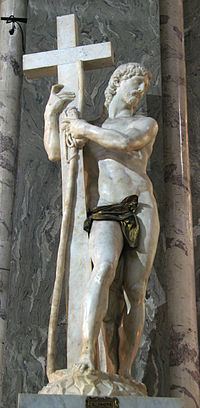
The first version, rough as it was, was asked for by Metello Vari, and given him in January 1522, for the little garden courtyard of his palazzetto near Santa Maria sopra Minerva, come suo grandissimo onore, come fosse d'oro. There it remained, described by Aldrovandi in 1556, and noted in some contemporary letters as apparently for sale in 1607, following which it was utterly lost to sight. In 2000 Irene Baldriga recognized the lost first version, extensively reworked in the seventeenth century, in the sacristy of the church of San Vincenzo Martire, at Bassano Romano near Viterbo; the black vein is clearly distinguishable on Christ's left cheek.
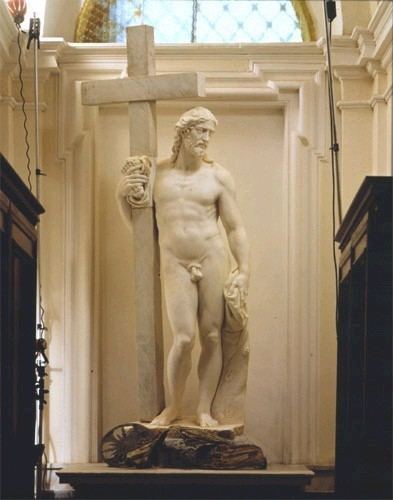
Despite all these problems, the second version impressed the contemporaries. Sebastiano del Piombo declared that the knees alone were worthy of more than the whole Rome, which William Wallace has called "one of the most curious praises ever sung about a work of art". Christ is shown by Michelangelo unclothed in a standing pose. Christ's sexual organs are exposed in order to show that his sexuality is uncorrupted by lust and completely controlled by his will, so that in his resurrected body he shows his triumph over both sin and death. During the Baroque period a girdle was added. A leg is flexed and the head turned back, according to the principle of contrapposto.
